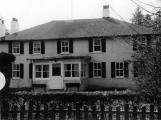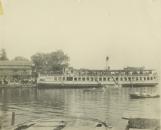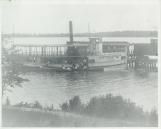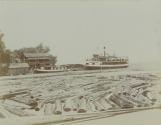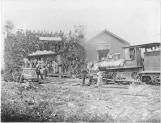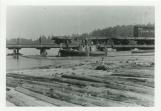15
The end of the Napoleonic Era in Europe, corresponding with the end of the War of 1812, resulted in numerous well-educated naval officers requesting land from the government in order to begin a new life in Upper Canada. To these retired, half-pay officers, the lake location and untouched shorelines of Lake Simcoe were most appealing in contrast to the already well cultivated, populated shoreline of Lake Ontario and the St. Lawrence.The lack of roads in Georgina and North Gwillimbury did not stop our earliest citizens. In 1999 a boat similar to a "Durham" boat was found in Lake Simcoe off Jackson's Point. These boats were used by early settlers to transport belongings to isolated settlements. Jackson's Point was settled after the War of 1812 by William Bouchier, a Captain and a shipbuilder in the British Royal Navy. He came to Canada to serve in the British Naval Service on the Great Lakes. He was to command a frigate which was being constructed in 1814 at Penetanguishene. The anchor for this ship is reputedly the one currently resting at Anchor Park in Holland Landing, which was abandoned there at the end of the war. In 1818 William received a large land grant in North Gwillimbury and Georgina. Scott Williamson of the Lake Simcoe Marine Heritage Society has many reasons to believe this Durham boat belonged to William, one of these being the location, at Wm. Bouchier's property.
17
William's younger brother James O'Brien Bouchier, a midshipman in the British Royal Navy, came to Georgina and founded Bouchier's Mills, later known as Sutton. He arrived at New York in 1816 with John Comer. Together they travelled on horseback to Niagara Falls and then by foot to Georgina.19
Another early settler was Lieut. William Johnson (later Captain). Johnson arrived in 1819, also by foot, and, having lost a cow, followed a Native trail to search for it. This is how he came upon an excellent site for a mill. It was this site which in 1823 became the little town of Pefferlaw.Johnson left a diary from 1832 to 1850. In it he records daily activities at his farm. Business at York required him and his workmen to travel by horseback, and occasionally with a cart, though more than one of his workers travelled by foot to Newmarket, Holland Landing, Sharon (Hope), and York.
Thomas Mossington, though not a Navy man, was a civilian employee of the British Navy Office. He travelled to Canada for business as a timber agent. In 1830 he purchased land in Georgina Twp. He wrote to a friend about the journey, asserting that numerous coaches, steamers, and stops in taverns made this an impressive network for communication.
21
On Sunday September 30 1832, William Johnson noted in his diary, "Heard that steamer arrived at Jackson's Point." Ever the efficient Navy man, Johnson's diaries are less than enthusiastic. But what a site this must have been! Even though the Navy men along the shore knew it was coming (most of them were shareholders in the venture), it must have been a spectacular sight.The first steamer stopped at the homes of its shareholders. One of these shareholders was John Mills Jackson, for which Jackson's Point is named. Here he had a warehouse and store for early residents to receive their supplies and mail.


